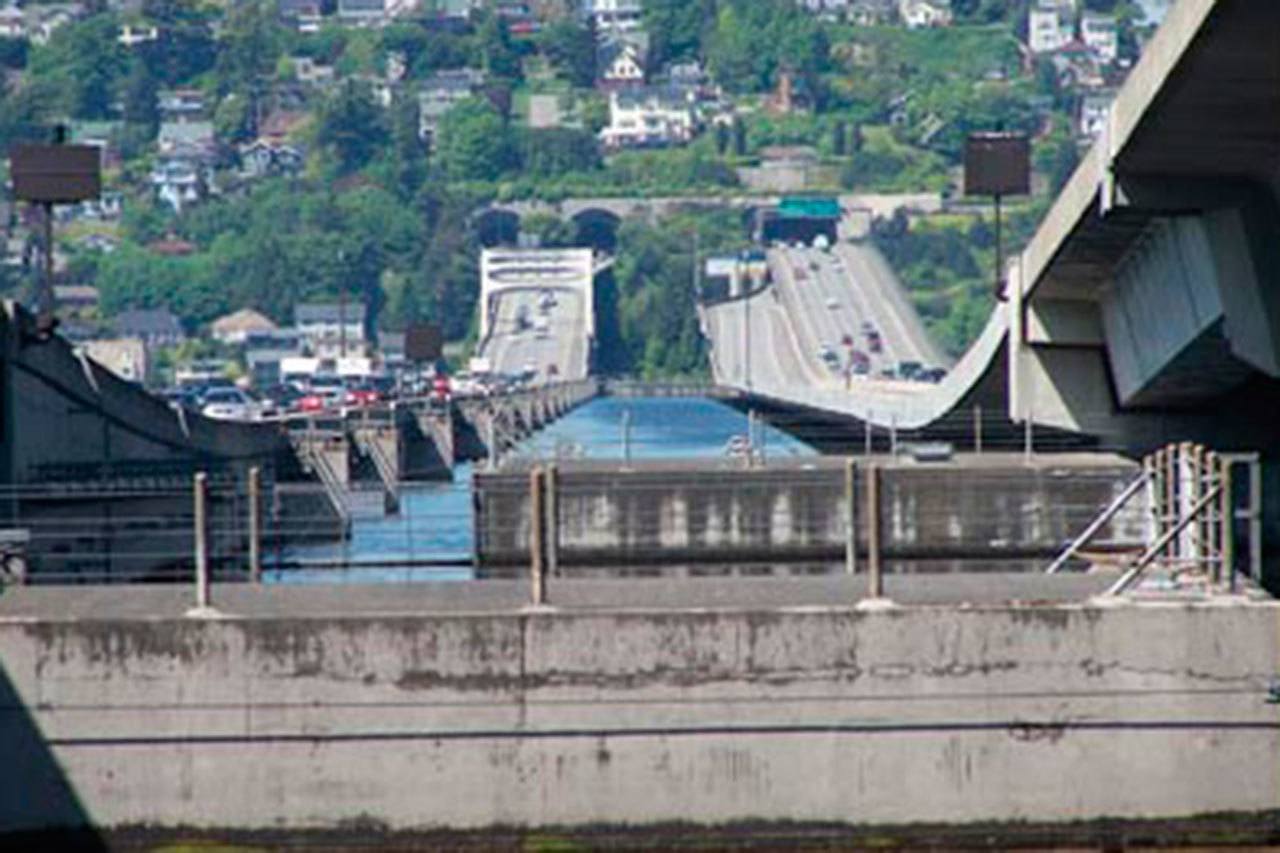The narrow and constricted “twin bore” tunnels under the Mt. Baker Ridge were built in 1943 to the former Washington state highway standards. Obviously, this standard is totally outdated, and upgrading it to current Federal Highway Administration standards is not possible. The FHWA does allow old tunnels like these to be grandfathered into the interstate highway system, but limits this option to tunnels up to 1,200 feet long. For some reason, the FHWA granted a waiver based on the south twin bore tunnel having an emergency lane. (This lane will disappear after the re-striping).
They are 1,400 feet long and do not have separate raised emergency walkways.
Each of the twin bores only has one emergency exit leading to a narrow staircase up to the top of the ridge. This exit is located at the western end of the bore. So, if a fire occurs towards the eastern end of the tunnel, the only way to get out of vehicles caught “upstream” of the accident is to walk on the roadway for up to a quarter of a mile.
Currently, WSDOT is upgrading the fire and safety systems in the old tunnels with fans to blow the smoke out of the tunnels from west to east. Additionally, improved lights and foam retardant sprinklers were added. Based on these upgrades, WSDOT maintains that it can continue to allow trucks carrying flammable cargo, including 18-wheeler fuel truck and trailer combos, in the old tunnels.
And, in spite of obvious life and safety concerns about this, neither WSDOT nor the Seattle Fire Department has ever conducted an evacuation drill inside these tunnels. (The fire tests that have been conducted consist of lighting gas fires in pans outside the twin bore tunnels).
I think it is irresponsible and negligent on the part of both WSDOT and the FHWA not to hold regular evacuation drills inside these tunnels. These tests should be supervised by independent experts in evacuation under conditions of fire, etc. inside narrow confined tubes. This would be similar to the tests Boeing conducts to make sure that passengers can be evacuated quickly after a crash and resulting fire.
WSDOT engineers have a mindset that there are engineering solutions to such emergencies — and use computer modeling as a way to predict that they can handle this. Motorists are supposed to either stay inside their vehicles, or if they desire, walk between the vehicles towards the exit.
Unfortunately, humans do not react in such a logical and orderly manner in a fire/safety situation, especially when trapped in a chaotic and disorienting situation without a clear path away from the fire.
Please demand that WSDOT and FHWA perform an emergency drill in the twin bore tunnels before the R-A-8 restriping and the continued carriage of flammable cargo takes place.
Claus Jensen
Mercer Island



